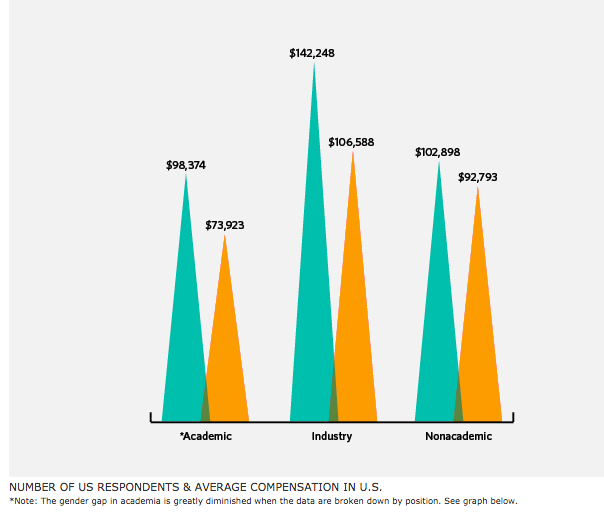From “The Gender Pay Gap in Physics Persists” by Audrey Williams June 11/02/2017 :
Once factors such as postdoctoral experience and age are accounted for, the gap between the salaries of men and women is, on average, 6 percent, according to a survey conducted by the Statistical Research Center at the American Institute of Physics. Before accounting for such factors, the data showed that men in physics earned, on average, 18 percent more than women. The survey was based on the experiences of people who had earned their doctorates in physics in the United States in 1996, 1997, 2000, or 2001 and who were working in the country in 2011.
Two key reasons for the disparity: Women aren’t aggressive enough during initial salary negotiations, and they are less likely to ask for a raise, the article says. Men are also overrepresented in physics, and that feeds an implicit bias that benefits men. As a senior researcher quoted anonymously in the article said, “Boys in the department give money to boys in the department.”
Nancy H. Hopkins, a renowned champion of gender equity in science, told the magazine that closing the pay gap would be a likely result of an increase in the number of senior women faculty members serving in positions of power — such as on hiring, promotion, and editorial boards. Ms. Hopkins, a molecular biologist and now a professor emerita at the Massachusetts Institute of Technology, sparked an examination of gender equity for women scientists at MIT and beyond decades ago. She measured things like her smaller laboratory space and lesser funding, and made the argument that her treatment amounted to discrimination. MIT subsequently released its own report acknowledging that female scientists were indeed discriminated against.
